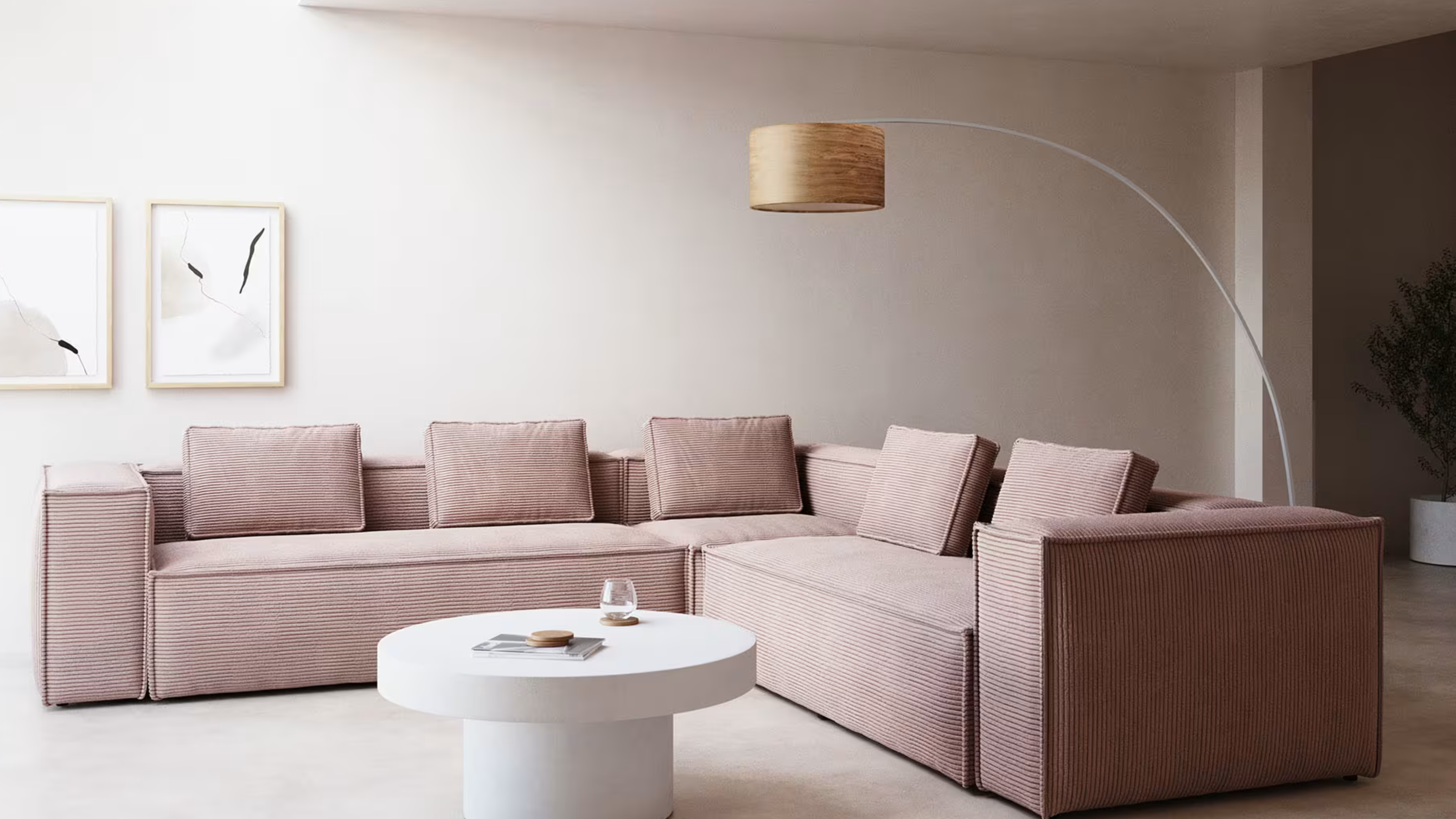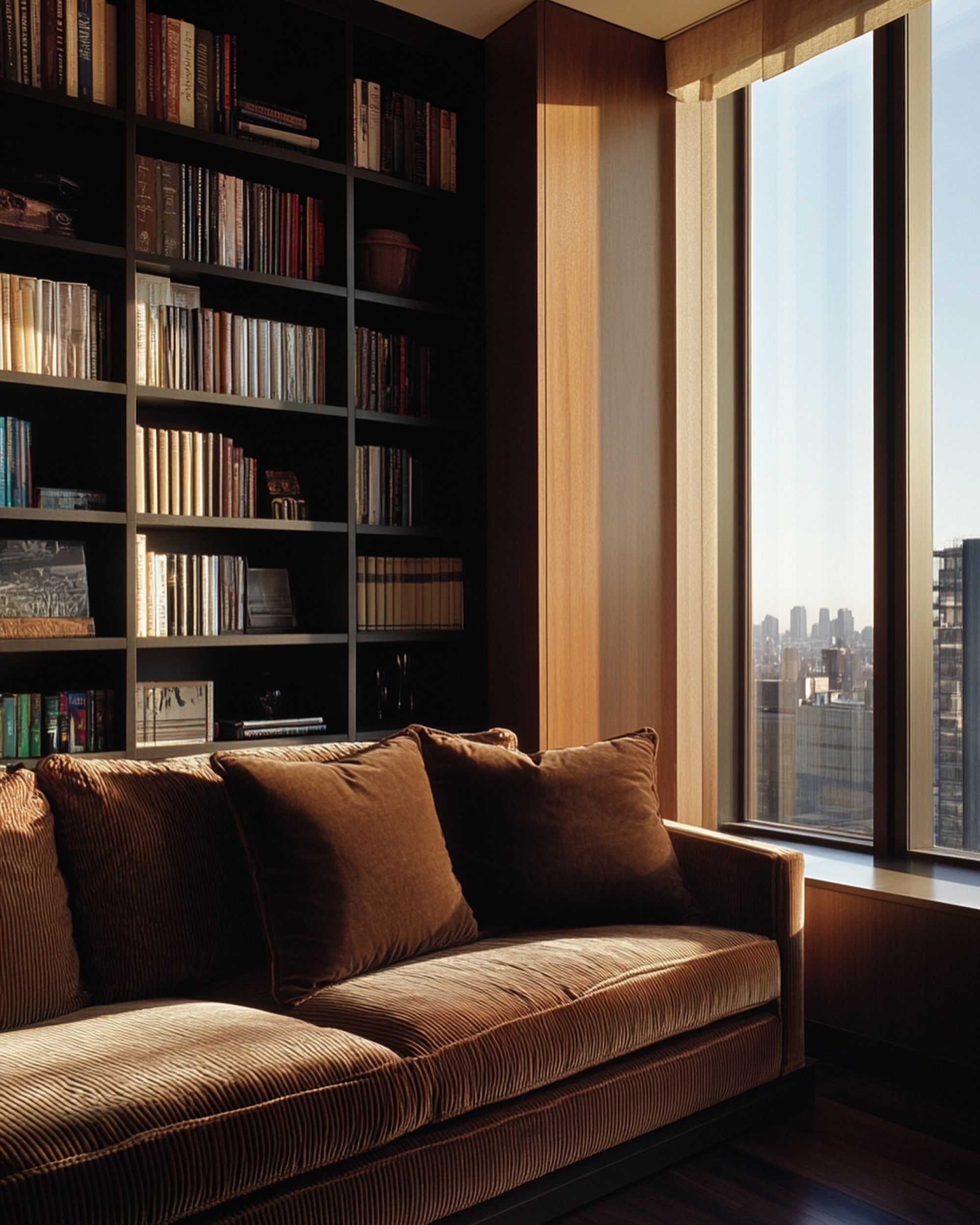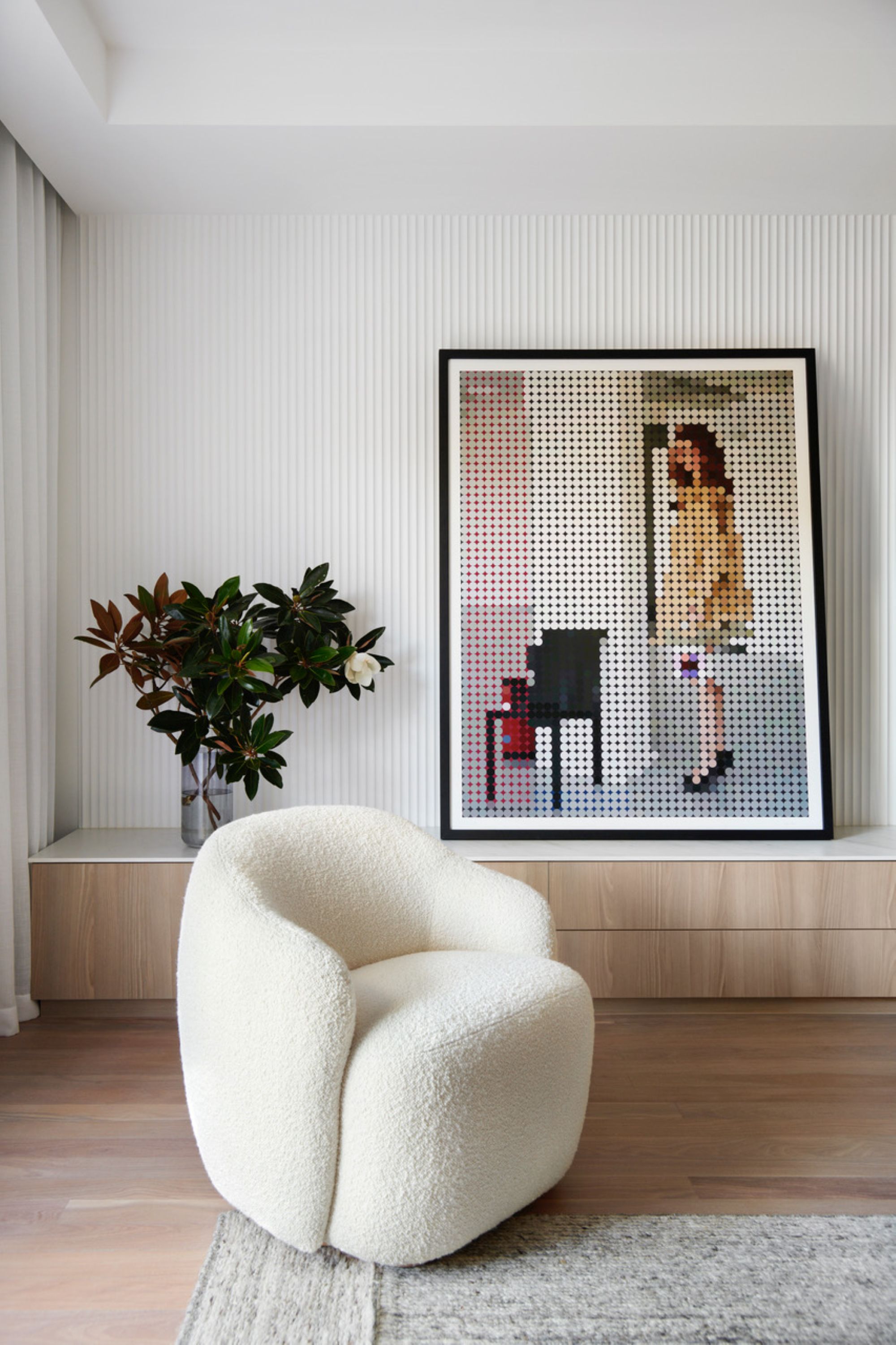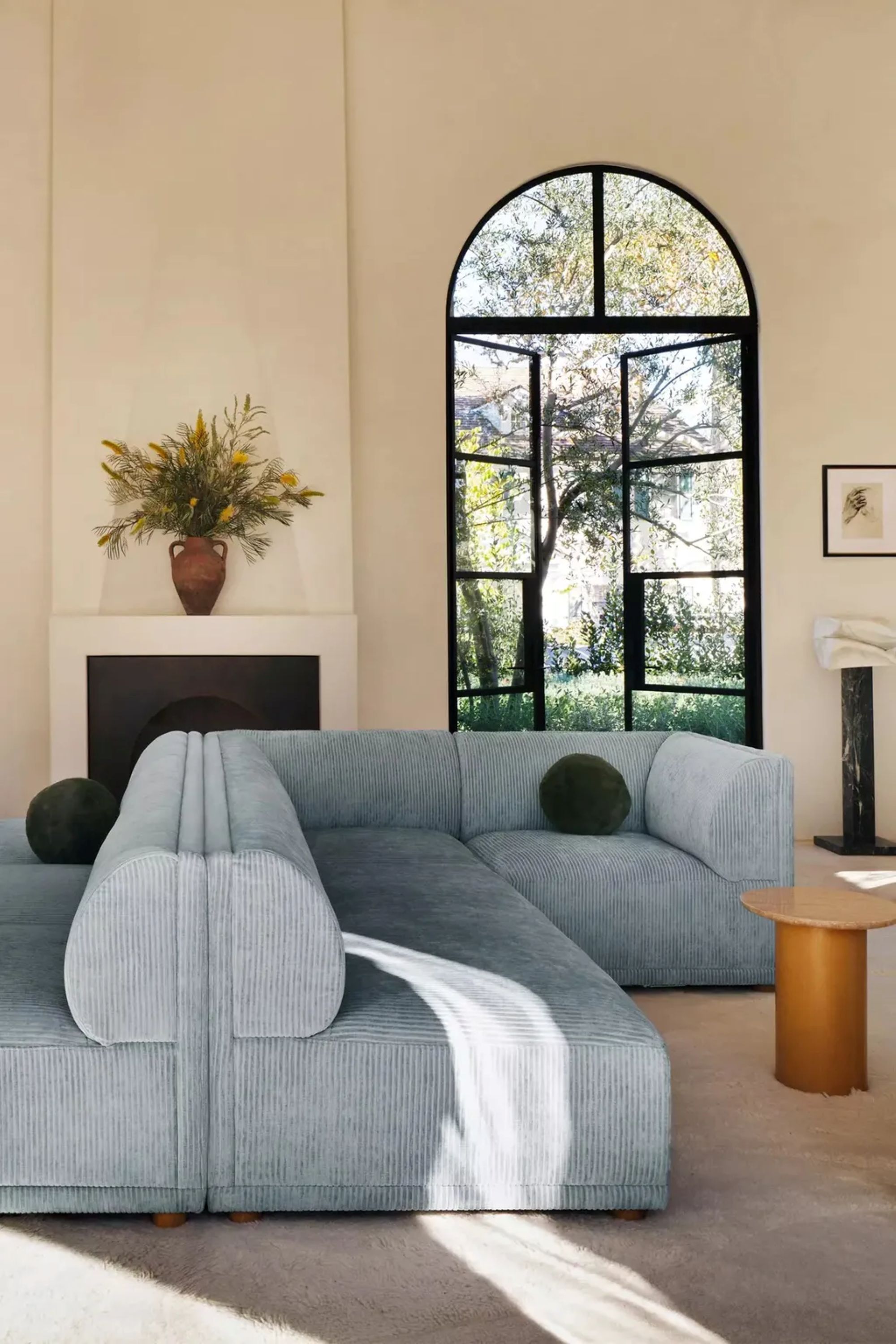
Unless you've been hiding under a rock, it's likely you've seen the way bouclé has dominated the design scene over the last few years. It's on couches, ottomans, lamps, pillows... but as with any trend, there comes a time when popularity turns into predictability, and we start looking for something new. And could that 'thing' be corduroy?
Certainly not a new fabric trend, corduroy is currently enjoying a long-awaited moment in the spotlight again, as we turn our collective attention back to 1970s design. "We see corduroy used almost exclusively in designs from the 1970s (the fabric’s first real heyday) and of more recent vintage," explains 1stDibs’ editorial director Anthony Barzilay Freund.
But that's not to suggest it's older than bouclé — no, Anthony shares that the nubby fabric first took off after designer Eero Saarinen used it for his Womb chair in the mid-1940s. Now, almost 80 years later, you can hardly walk into any home without seeing something upholstered in the fabric.
So, it's clear they both have a long-term place in the interior design scene, so how do you pick? Which is better? Bouclé vs corduroy? In order to decide, let's take a closer look at each.
Corduroy Fabric

Corduroy has strong ties to the 70s, and therefore it's common to see the fabric dyed in vibrant colors that are reminiscent of the time period. However, aside from its potential for vibrancy, corduroy can have depth, warmth, and a traditional sophistication to it.
It's the perfect material for a cozy living room, according to Philippe Desart, managing director of Arte International. "Its soft, ridged texture wraps interiors in a cocoon of comfort," he adds. "Timeless yet relaxed, this understated fabric invites a sense of ease and intimacy, creating rooms that are as welcoming as they are refined."
And while corduroy is just as well-known as bouclé, it certainly doesn't have the same level of notoriety as the nubby fabric. "Corduroy has been less ubiquitous [than bouclé] and manages to fly a bit more under the radar, perhaps because its defining texture is less easy to discern from across a room," says Anthony Barzilay Freund.
It's subtle, yet alluring and perfectly textural in an understated way.
From texture alone, corduroy instantly adds an intriguing depth to any space. But since it's a fabric that has strong ties to the 70s, why not look for corduroy pieces in a traditionally 70s color palette? This dining chair (which comes in a set of two), will do just the trick.
If you're looking for something small that'll give your space some texture, opt for a corduroy throw pillow, like this one. Aside from its unique ridged feel, the deep blue color adds to its allure. Use this pillow to bring some depth to your room.
If you love this fabric and just need to bring it into your home, opt for something large like a corduroy sofa. This sofa is designed to fit three people and is finished with ultra-comfortable corduroy — perfect for relaxing in front of the TV or taking a nap.
Bouclé Fabric

Bouclé is a fabric that came in hot to the interior design scene. Although it's technically been around for decades, its popularity took off in the last few years — especially thanks to the quiet luxury trend.
Where bouclé is matte and nubby, corduroy is lustrous and straight-lined. That's not to say it looks bad, but perhaps its overuse has slowly slipped into 'overdone'? "Truth be told, bouclé's popularity has turned it into a bit of a cliche," says Anthony Barzilay Freund.
But that's the irritating thing about trends. Popularity becomes predictability. But bouclé has already been around for decades, and it'll continue for many more. "I somewhat sheepishly (excuse the pun) admit that bouclé still manages to be fresh and inviting to my eyes no matter how many iterations of the upholstery I’ve seen," Anthony confesses.
So while bouclé might be overused, it seems we're not over it just yet.
We often see bouclé decor in neutral colors because of its connection to quiet luxury or minimalist aesthetics. This white ottoman would be the perfect addition to a cozy minimalist living room thanks to its soft material, round shape, and the unique touch of deep stitching.
This pillow features the soft bouclé fabric in a light tan color. It's in the shape of a knot, which could certainly add a level of dimension to any couch, chair, or bed on which it is placed. This pillow makes a statement in a classy, stylish way.
There's nothing better than an ultra-soft bouclé chair, and this one is just that. The style of this chair serves as the perfect living room accent with its low seat and gold base. Just picture yourself sinking into this chair to enjoy your evening read.
So, Bouclé vs Corduroy?

Corduroy and bouclé both bring a unique charm to the world of interior design. That's a fact. While corduroy has a ridged yet soft texture that evokes a sense of nostalgia thanks to its strong ties to 70s style, bouclé, conversely, offers a fresher, more modern look with its looped and nubby texture.
Is it time for corduroy to replace bouclé? It feels almost like a popular opinion these days to reject bouclé — a sign that you a bold enough to defy interior design trends. But look to the market, to design shows, to people's homes. There's a reason bouclé furniture is still everywhere: people are still buying it, because they still love it.
So if you still love bouclé, buy bouclé. But if you find yourself bored by it, perhaps corduroy is the counter you've been waiting for.







